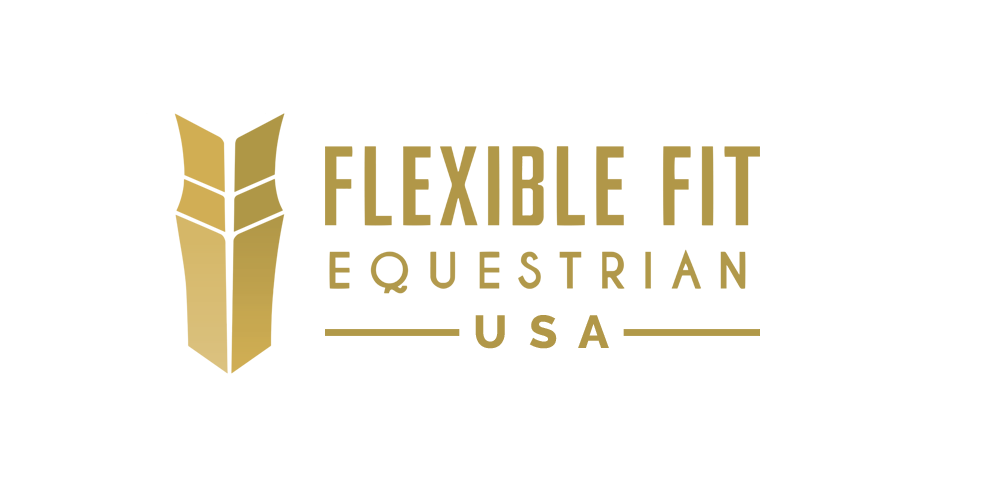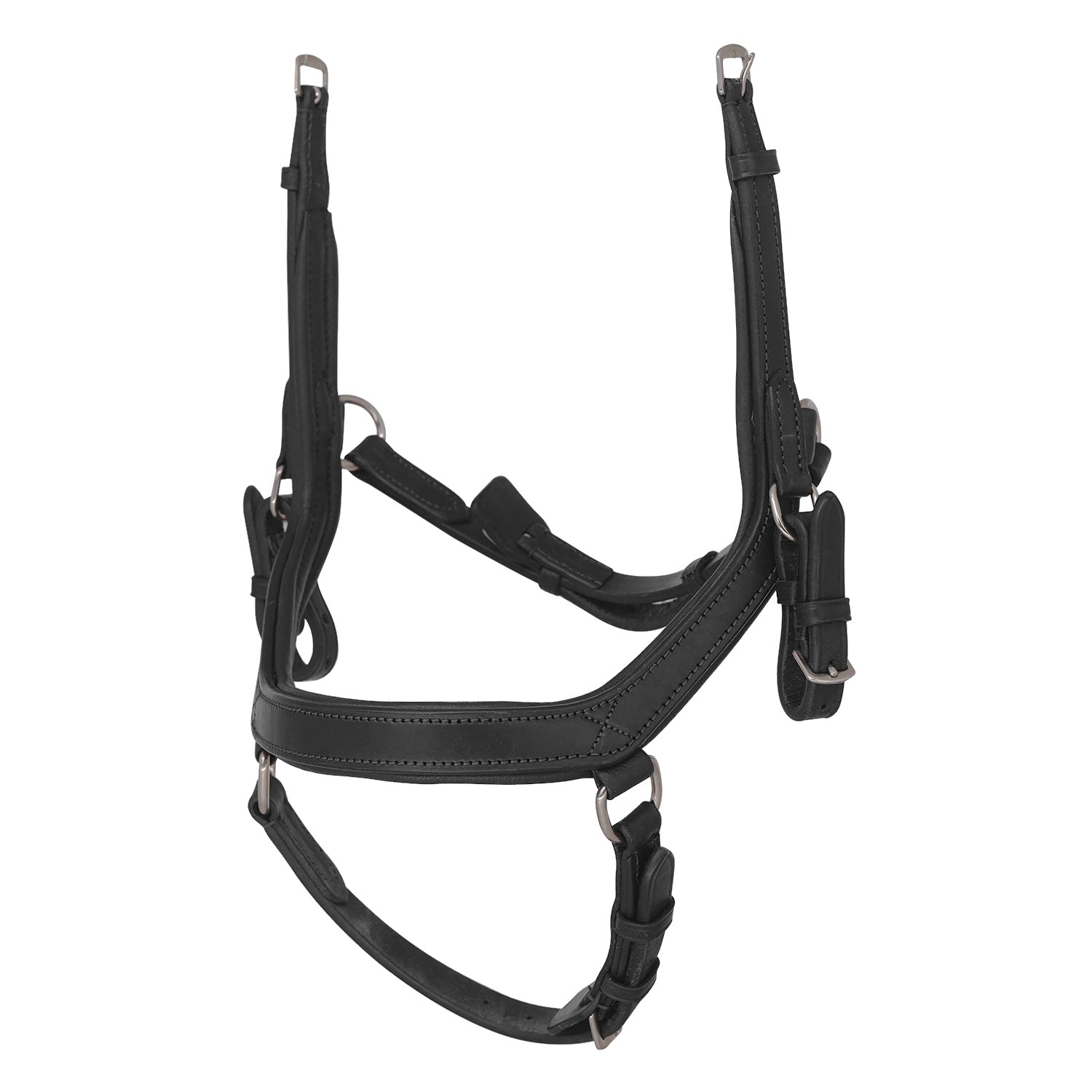
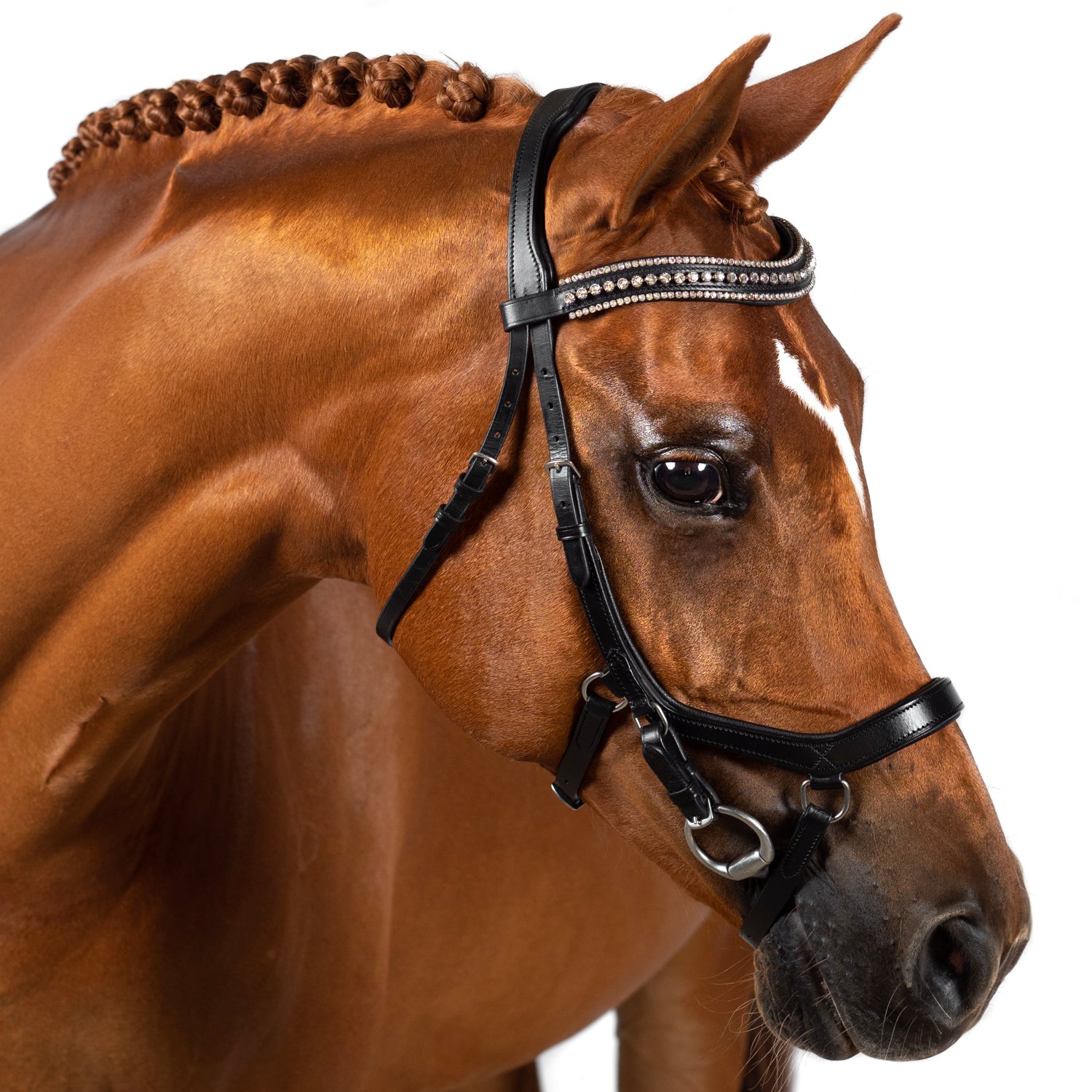
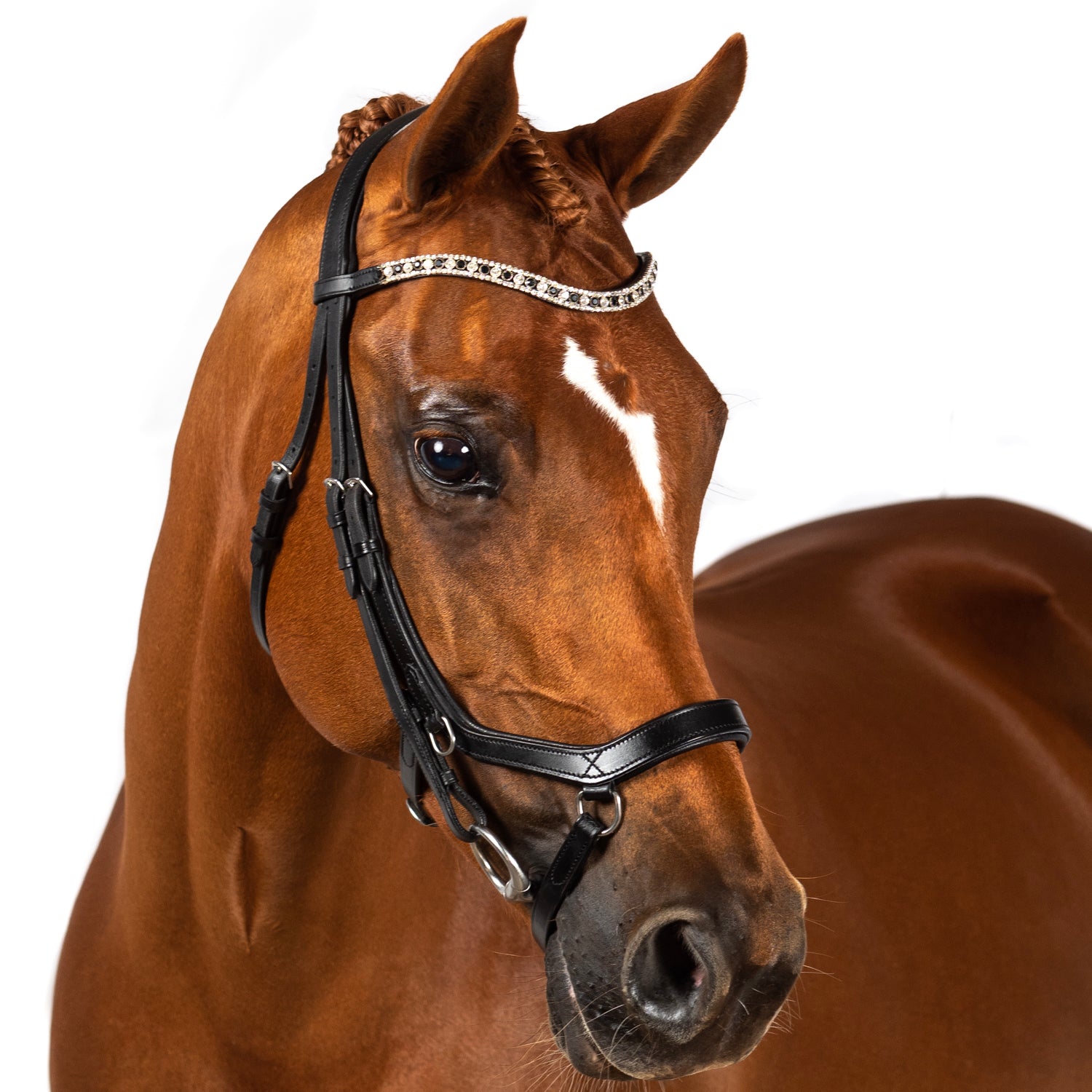
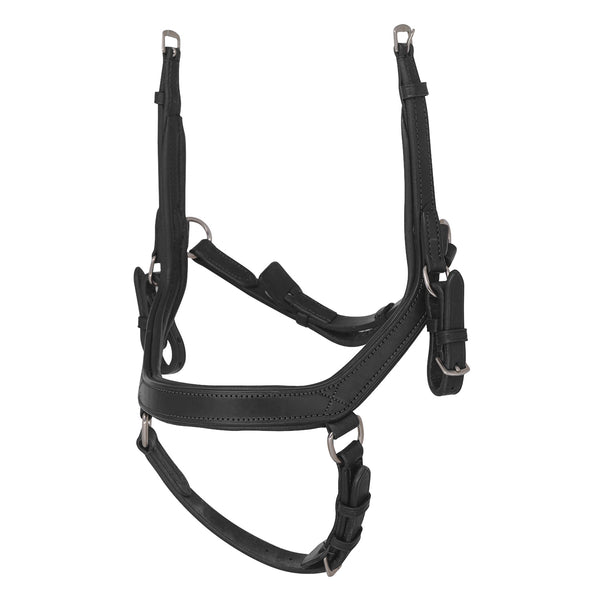
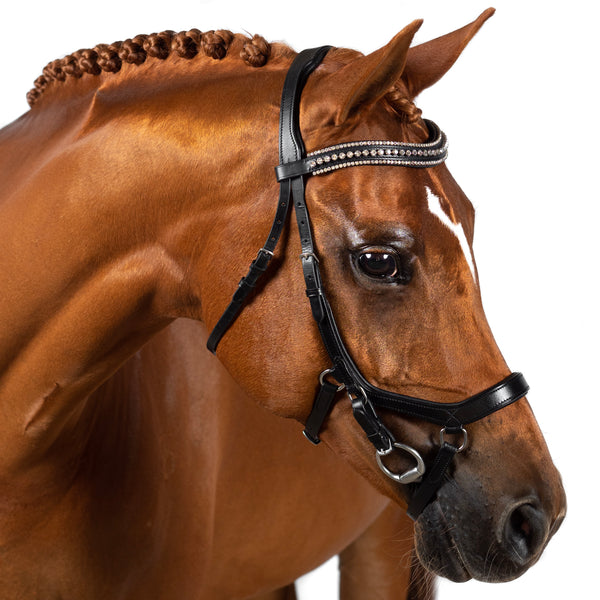
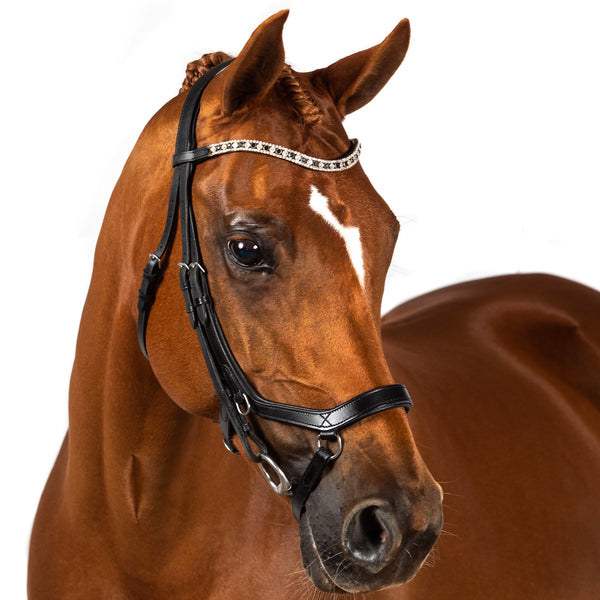
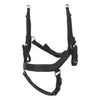
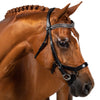

Ergonomic Duo Noseband - Black Noseband
- Price
- $99.95
This Ergonomic Duo (Micklem Style) Black English Leather noseband is part of our popular Gel Snaffle range. This noseband can either be used on its own with a standard head piece and cheek straps, or as a combination noseband using the included bit hangers, making it a versatile addition to your collection. Please see pictures for examples of both styles of use.
Padded with our unique gel, with use this noseband will mould to your horse’s face for reduced pressure on sensitive areas of the face.
- The infraorbital nerve exits the skull in the area above the cheek bone. The diagonal section allows the noseband to sit lower on the nose than a standard noseband which effectively avoids this sensitive nerve.
- The sensitive tissue of the horse's cheek can be pushed into the teeth by a standard noseband. The forward cut of the noseband, and the use of a jowl strap, means there is no pressure over this area.
- The jowl strap allows the cheek pieces to sit well clear of the eyes without the need to over tighten.
- The flash strap is offset, rather than meeting at the bridge of the nose like a standard flash. This avoids the soft areas above the nostrils and ensures there is no restriction on the horse's ability to breath.
All of our nosebands are double buckle nosebands, buckling on both sides of the crown piece. This helps to create a perfect fit and also reduces the volume of leather passing over the poll, reducing pressure and increasing comfort. This noseband is a crank noseband, meaning that the closure of the noseband folds back on itself before buckling.
This noseband has buckles designed to attach to a 4/8" wide strap. All Flexible Fit bridles have a standard 4/8" wide noseband attachment. If you are planning to use the noseband with the bit hangers, rather than with standard cheek straps, you will need to ensure you are purchasing the correct headpiece.
If you are buying a noseband for a non-Flexible Fit bridle that does not have attachments for double buckle nosebands, you may need to purchase one of our noseband converters.
Shipping Information
What is our delivery time?
We strive to ship all orders within seven (7) business days. However, occasionally circumstances outside of our control may cause dispatch time to extend beyond this timeframe. This may be the case during times of high traffic such as Black Friday Sales. Most items are sent via USPS Priority Mail or Royal Mail. We try to provide tracking for all orders, but very small orders may be sent untracked. Delivery timeframes vary depending on the season.
Some or all items within your order may ship from our warehouse the UK. When shipping from the UK, we use Royal Mail International Tracked shipping with an approximately 7 working day transit time. You will not be charged import duties on any items shipped from the UK to the US.
***WE ARE UNABLE TO SHIP TO PO BOXES.*** We apologise for any inconvenience this may cause.
International Buyers Please Note:Your country's import duties, taxes and charges are not included in the item price or shipping charges. These charges are the buyer's responsibility and are normally collected by the delivering shipping company or when you pick the item up; do not confuse them with additional shipping charges. Please check with your country's customs office to determine what these additional costs will be prior to buying. We don't mark merchandise values below value or mark items as "gifts". US and international government regulations prohibit such actions. Thank you for your understanding.
About Us
Why choose Flexible Fit?
We have worked extremely hard for over 10 years to bring to you a brand that we love. We do not compromise on quality and stand by our products with a two-year guarantee.
We want every horse to have a bridle that fits. If you ever buy an item from us that does not fit, or you don’t like the style, you can swap it out. Our goal is for you and your horse to be happy, and a correctly fitted bridle plays a huge role in that.
Our bridles are made from the highest quality English Sedgwick leather, vegetable tanned for longevity and softness. You won’t find another bridle on the market that has such a nice feel straight out of the box.
Hand made with the highest quality craftsmanship, our leather goods are stitched at 10-12 stitches per inch. It’s the little details that give you the ultimate touch of luxury.
If you are ever unsure about what size to buy, we have compiled extensive measuring guides and information pages. Check some of these out to discover why you need a bridle that fits. We are always happy to give a helping hand to ensure the best possible fit, so please don’t hesitate to get in touch.
Follow our sponsored rider to see Flexible Fit in action
Click Here
You may also like
The leather quality is fabulous, but I'd say the sizing is a hair large. I bought this for a 16h appaloosa with a generic horse-sized head, but needed a cob size in this noseband (attached to a horse sized crownpiece) for the noseband to not be too wide. Luckily, it's easy to mix/match sizes with this company.

